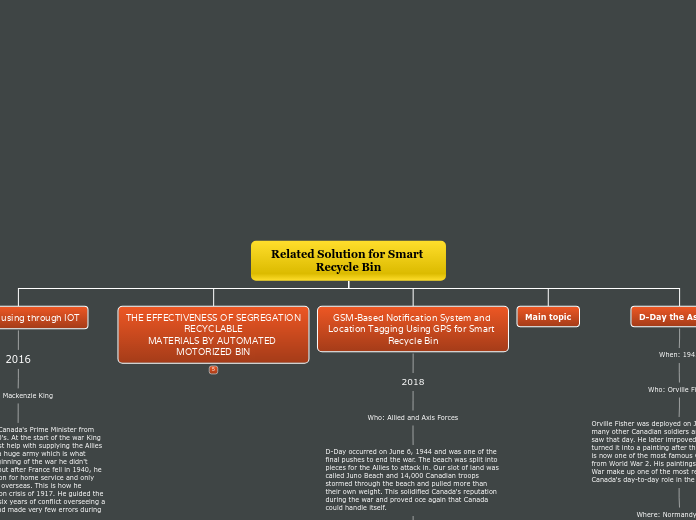arabera Dora_C Matius 5 years ago
287
Related Solution for Smart Recycle Bin

arabera Dora_C Matius 5 years ago
287

Honelako gehiago
Orville Fisher was deployed on Juno Beach with many other Canadian soldiers and sketched what he saw that day. He later imrpoved on the image and turned it into a painting after the battle. The painting is now one of the most famous Canadian paintings from World War 2. His paintings of the Second World War make up one of the most records showing Canada's day-to-day role in the war.
D-Day occurred on June 6, 1944 and was one of the final pushes to end the war. The beach was split into pieces for the Allies to attack in. Our slot of land was called Juno Beach and 14,000 Canadian troops stormed through the beach and pulled more than their own weight. This solidified Canada's reputation during the war and proved oce again that Canada could handle itself.
Where: Normandy, France
Canadian soldiers heading towards Juno Beach
The radar was invented in 1935 but it wasnt really useable until Watson-Watt created a revolutionary radar which could be used in war. Radars use radiowaves to see the location of an object, the waves reflect off of an object and thats how we can see the oject. An example of this would be the Battle of Britain. The British had less planes and experienced pilots compared to the Germans but still won the battle due to the radar.
Where: Britain
Sir Robert Watson-Watt, the man who created the radar
Mackenzie King was Canada's Prime Minister from the early to mid 1900's. At the start of the war King wanted Canada to just help with supplying the Allies rather than building a huge army which is what happened. At the beginning of the war he didn't impose conscription but after France fell in 1940, he introduced conscription for home service and only volunteers were sent overseas. This is how he avoided the concription crisis of 1917. He guided the country through the six years of conflict overseeing a massive war effort and made very few errors during this time.
Where: Canada
Mackenzie King, late 1940's